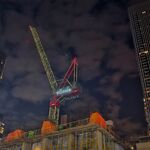crs1026
Superstar
Galvanic corrosion is a well enough known phenomenon that it doesn't really enter into the equation as a "gotcha!" for railway equipment anymore. Hell, even the 1954-built CC&F and Budd cars had steps and processes to their construction and assembly to mitigate against it quite effectively.
Dan
Fair enough, but that corrosion has still caught up with equipment of that vintage - albeit slowly - and one would expect it to be a consideration for inspections of any aging equipment. The assertion that corrosion isn't a consideration for aluminium or stainless steel is simplistic.
At the end of the day, we don't yet know enough from Amtrak about where the Horizon corrosion is or what it is from. Or how many one-ofs were identified and known previously before the call to inspect the entire fleet.
Rust never sleeps.
- Paul
















